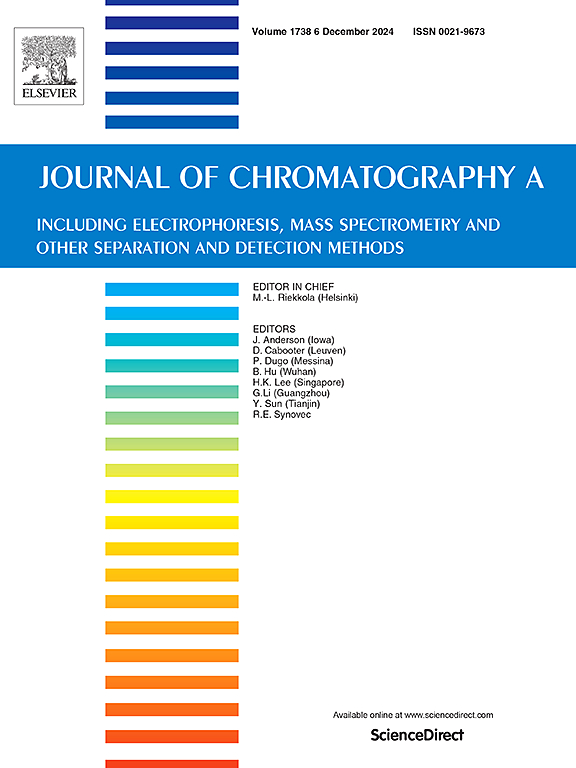hsccc - chebichef矩回归法定量测定橄榄叶提取物中橄榄苦苷含量
IF 4
2区 化学
Q1 BIOCHEMICAL RESEARCH METHODS
引用次数: 0
摘要
橄榄苦苷是橄榄叶中主要的生物活性酚类化合物,因其对健康的益处而引起了人们的极大兴趣。由于大量结构相似的代谢物共存,使得传统的色谱分离效率低下,阻碍了从粗提取物中靶向分离橄榄苦苷。在这里,我们首次描述了一个紧凑的预测框架,该框架结合了高速逆流色谱(HSCCC)、离散切比切夫矩(TM)特征提取和逐步回归(SR)建模来量化橄榄苦苷。以80%乙醇提取橄榄叶,粗提物以乙酸乙酯-石油醚-水(6:0.06:7)为溶剂,反相模式连续注射HSCCC。高效液相色谱法分析所得馏分和标准品。色谱图被转换成二维矩阵,从中计算20阶的TMs。正逐步回归发现了一组与橄榄苦苷浓度密切相关的TM系数,并建立了一个高精度的线性预测模型(R2 > 0.99)。与MCR-ALS相比,基于tm的模型使用更少的参数获得了更好的预测性能。综合HSCCC-TM-SR方法为橄榄苦苷的定量提供了一种快速、可扩展的方法,并可推广到其他复杂的天然产物。本文章由计算机程序翻译,如有差异,请以英文原文为准。
HSCCC-Tchebichef moment regression approach for enhanced quantification of oleuropein in olive leaf extracts
Oleuropein, a major bioactive phenolic compound from olive leaves, has attracted considerable interest for its health benefits. Targeted fractionation of oleuropein from crude extracts is hampered by the co-existence of numerous structurally similar metabolites, making conventional chromatographic separation inefficient. Here we describe, for the first time, a compact predictive framework that combines high-speed countercurrent chromatography (HSCCC), discrete Tchebichef moment (TM) feature extraction, and stepwise regression (SR) modelling to quantify oleuropein. Olive leaves were extracted with 80 % ethanol, and the crude extract was subjected to continuous-injection HSCCC in reverse‑phase mode using an ethyl acetate-petroleum ether-water (6:0.06:7) solvent system. HPLC analysed the resulting fractions and reference standards. Chromatograms were converted into two-dimensional matrices from which TMs up to the 20th order were computed. Forward stepwise regression identified a small set of TM coefficients that correlated strongly with oleuropein concentration and yielded a linear predictive model with high accuracy (R2 > 0.99). In comparison to the MCR-ALS, the TM-based model achieved superior predictive performance using fewer parameters. The integrated HSCCC-TM-SR approach provides a rapid and scalable method for quantifying oleuropein and may be extended to other complex natural products.
求助全文
通过发布文献求助,成功后即可免费获取论文全文。
去求助
来源期刊

Journal of Chromatography A
化学-分析化学
CiteScore
7.90
自引率
14.60%
发文量
742
审稿时长
45 days
期刊介绍:
The Journal of Chromatography A provides a forum for the publication of original research and critical reviews on all aspects of fundamental and applied separation science. The scope of the journal includes chromatography and related techniques, electromigration techniques (e.g. electrophoresis, electrochromatography), hyphenated and other multi-dimensional techniques, sample preparation, and detection methods such as mass spectrometry. Contributions consist mainly of research papers dealing with the theory of separation methods, instrumental developments and analytical and preparative applications of general interest.
 求助内容:
求助内容: 应助结果提醒方式:
应助结果提醒方式:


